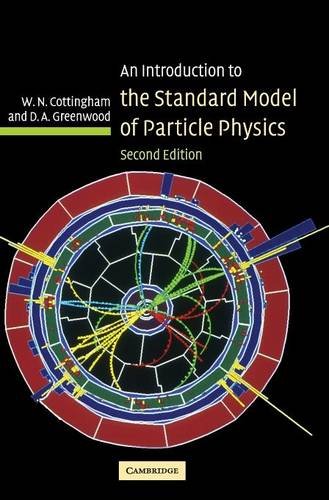An Introduction to the Standard Model of Particle Physics pdf free
Par goodlett sheryl le dimanche, janvier 1 2017, 00:52 - Lien permanent
An Introduction to the Standard Model of Particle Physics. D. A. Greenwood, W. N. Cottingham

An.Introduction.to.the.Standard.Model.of.Particle.Physics.pdf
ISBN: 0521852498,9780521852494 | 294 pages | 8 Mb

An Introduction to the Standard Model of Particle Physics D. A. Greenwood, W. N. Cottingham
Publisher: Cambridge University Press
�The current theoretical framework that describes elementary particles and their forces, known as the Standard Model, is based on experiments that started in 1897 with the discovery of the electron. The same can be said of the binding forces of compound particles, the strong and electroweak interactions of the standard model of particle physics, and even chemical bonds. But the label “God Particle,” attached to the poor unsuspecting Higgs boson by Leon Lederman and Dick Teresi, continues to wreak havoc on physicists' attempts to clearly explain what is going on. Reply | Report Abuse | Link to this. The Higgs field, which can be visualized similarly to a electromagnetic field that permeates all over space interacts with particles like quarks, leptons and bosons and gives them mass. Now, the standard model of particle physics is complete, except for one important thing: black holes. Home >> Science >> Physics >> Particle Physics. Collider Physics within the Standard Model: a Primer - free book at E-Books Directory - download here. Collider Physics within the Standard Model: a Primer by Guido Altarelli. 2008, Nambu receives half of the Nobel Prize for introducing the concept of spontaneous symmetry breaking into particle physics, which led, for example, to the explanation of why some particles have mass and others have not (Higgs mechanism). In the standard model of particle physics (with 0-dimensional particles) things only interact if they bash right into each other, whereas, in the string world, objects (strings) interact in a more subtle, well, stringy kind of way. Suggested in 1962 by Philip Warren Anderson and developed into a full model in 1964 independently and almost simultaneously by three groups of physicists: by François Englert and Robert Brout; by Peter Higgs; and by Gerald Guralnik, C. An Introduction to the Standard Model of Particle Physics Pages: The new edition of this introductory graduate textbook provides a concise but accessible introduction to the Standard Model.